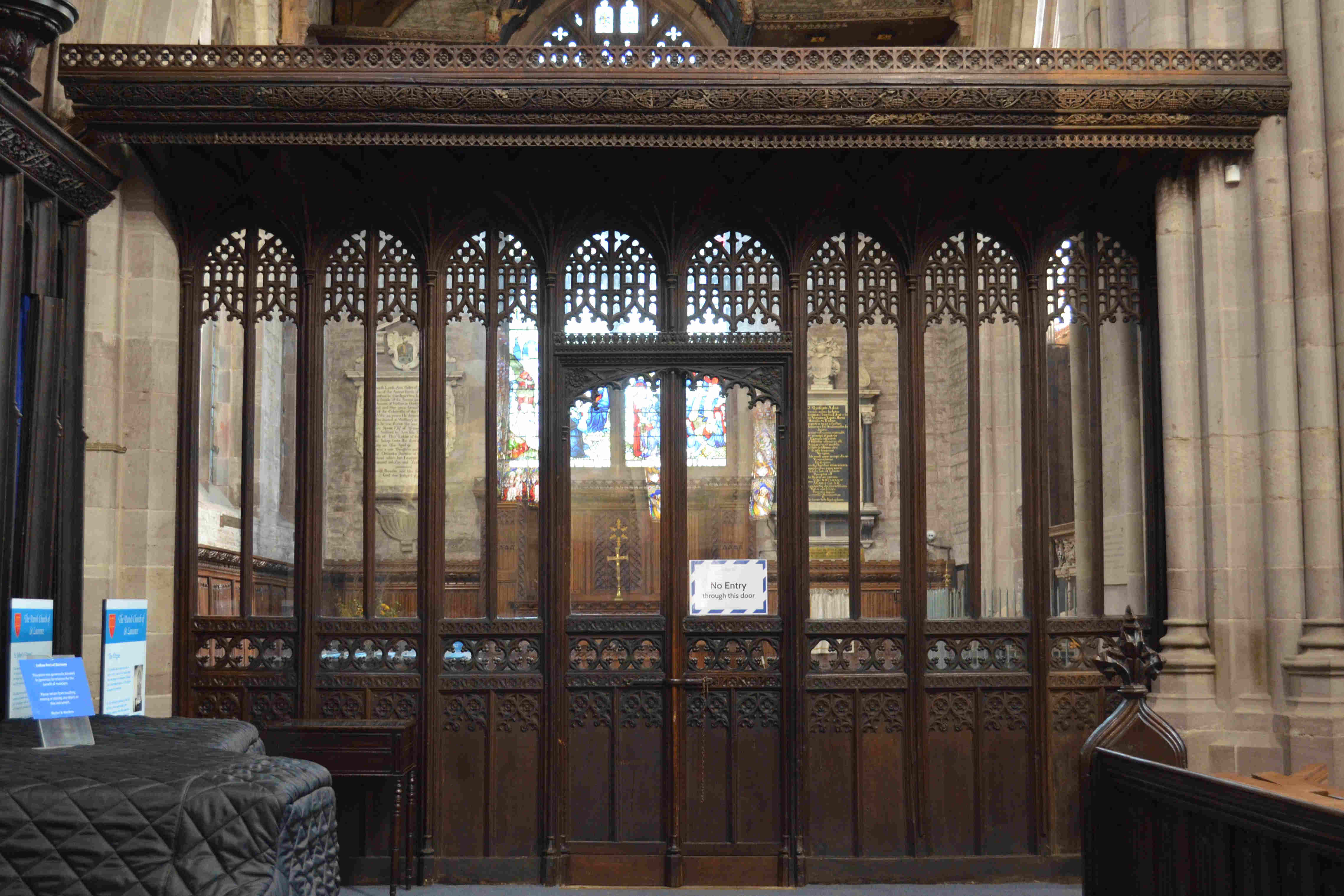
A Brief History
Most of the Church you see today dates from 1199-1470.
The site of St Laurence's was of religious or ritual significance in the pre-Christian era. A burial mound was removed in 1199. There may have been a church on the site in the Saxon period but the evidence for this is entirely conjectural. ...read more...

The Tour
You may do a full tour of St Laurence's in the sequence set out in these pages, or dip into the Church's glories in any order you like.
If you are especially interested in the windows, monuments, misericords or organ, you can also access them separately by following the special links.

Nave
As you enter St Laurence's by the South Door, start by standing at the west end near the font and take in the sheer scale of this beautiful building.
What you see is mainly the result of the remodelling of the Church undertaken between 1433 and 1450. ...read more...

North Aisle
The north aisle was the first element of a long C14 campaign of enlarging and enhancing the Church. It was rebuilt in 1305-08 in the early Decorated style retaining the original plan-form of the Church, and contains the earliest of St Laurence's surviving medieval stained glass. ...read more...

North Transept
The north transept may have been started not long after the north aisle was complete but from the style of its windows was the last of the C14 extensions and improvements. ...read more...

St John's Chapel
In the later middle ages the Chapel of St John was the chapel of the Palmers' Guild. The Guild's dedication to St John and the Virgin Mary dates from the early 14th Century.
The lower parts of the north and east walls are those of the church of 1199, but the remainder dates from the 15th Century rebuild. ...read more...

Tower Crossing
The sheer scale of the tower arches and the way the tower lantern floods the Church with light are a spectacular concept. Although much greater in scale the tower arches follow the moulding pattern of the nave and, while the tower was the last of the C15 remodelling to be completed, it appears to be part of a unified design for the Church as a whole. ...read more...

Chancel
The Chancel is the liturgical focus of the Church. To the viewer at the West Door the Perpendicular architecture of the whole is designed to lead the eye to it.
As you enter under the Rood Screen the vertical emphasis of the windows gives a feeling of great space and calm. ...read more...

Lady Chapel
The Lady Chapel, in the south-east corner of the 1199 church, has been dedicated to the Virgin Mary since at least the C14. The original masonry of the walls was modified in the 1330s for the insertion of the east window, and in the 1440s for the insertion of larger south windows and raising the roof along with the rest of the Church. ...read more...

South Transept
The south transept dates from the first half of the C14 but roof was raised in the C15 with the general enhancements at the time. The transept was St Catherine's Chancel before the reformation and retains the dedication today. ...read more...

South Aisle
The south wall of the aisle dates from the rebuilding of 1199, although the roof was heightened and larger windows were inserted in the C15. ...read more...

South Porch
The hexagonal C13 south porch is a very unusual feature being one of only three in England. It was the first of the significant improvements and extensions to the St Laurence's in the late C13 and C14....read more...

Windows
St Laurence's has very interesting stained glass much of it dating from the 15th Century. This mini-tour of the windows starts at the south porch and proceeds clockwise around the Church. But the windows are also referred to in the general tour. ...read more...

Monuments
St Laurences contains monuments to prominent local people some of them of national importance. These pages describe the most significant of them. ...read more...

Misericords
The misericords are the carvings under the seats of the stalls. St Laurence's collection of 29 is one of the largest for a parish church and was described by Sir Nicklaus Pevsner as “interesting and entertaining”. ...read more...

Organ
The Snetzler organ in St Laurence's is considered to be one of the finest parish church organs in England. It was built in 1764 and originally installed over the rood screen but moved to its current location in the north transept when it was considerably enlarged in 1860. ...read more...

Bells
The tower of St Laurence's contains one of the finest rings of 10 bells in the country. Six of them were cast by Abraham Rudhall of Gloucester in 1732, with a tenor, or largest bell weighing 17cwt. ...read more...